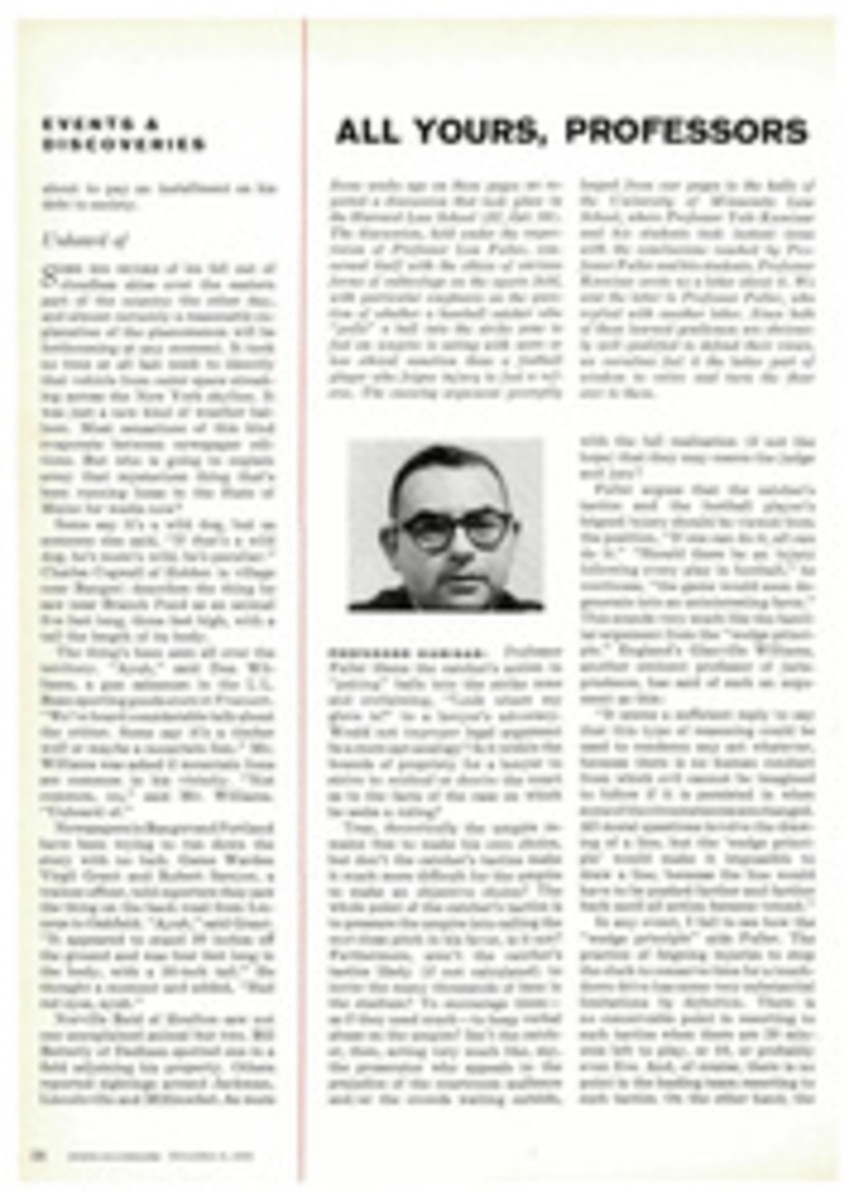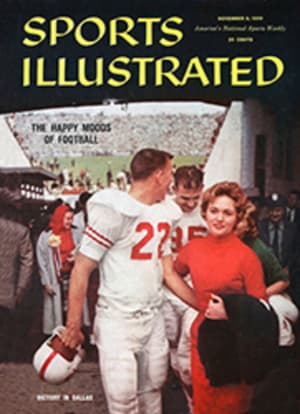
PLENITUDE BY THE PLATTE
The duck hunter may be playing pinochle in his blind this fall for want of ducks. But not his shooting cousin, the upland bird hunter. Last week in Nebraska he was potting pheasant fast as he could reload. Only a few years back it was hard enough for one Nebraska pheasant to find another Nebraska pheasant, much less for a Nebraska hunter to find either of them. But when the season opened a fortnight ago it opened with a bang. It wasn't another opening, another show—not by a long wing shot. It was a stunning and major revival; the pheasants were back and Nebraska had 'em. The game commission said there were 9 million birds scratching in the milo (right) on either side of the Platte, that old, slow "mile wide and inch deep" river which cuts the Cornhusker State in two. This was more ringnecks than Nebraska has had since 1942, when they were as thick as sparrows in a city park, and twice as many as last year. It had taken some tall doing to achieve this new plenitude by the Platte, for at the end of World War II the pheasant had declined to the dolorous point where a man had to hunt hard and long to knock down his limit.
Nebraska game officials have a theory which isn't so much original as refreshing in this day of the reduced bag and shorter season. They feel that environment, not gunning pressure, controls the bird population. Given normal precipitation, adequate cover and a constant food supply, pheasant will thrive. Take away any of the three and the population will wane, no matter how many guns are in the field.
During the war, land, by necessity, was heavily used in Nebraska. Fields were plowed to the fence line, bottoms were burned out and cleared, range was kept cropped short by huge herds of beef cattle and sheep. Without cover and food the birds perished, and the damage was compounded by the yard-deep drifts and perilous cold of the winter of 1948-49. In 1949 there were but 2 million remaining. There had been 12 million in 1942.
Then Nebraska sold a crash land-management program which demonstrated to landowners that if they only gave the game a chance it would prosper. Ranchers let their draws and bottoms be, farmers planted legumes or succession annuals in fields lying fallow during crop rotation, and the pheasants came back. The best way to get them is the gang hunt, a party of five or 10 men joining forces to work the vast, open fields. The main part of the group drives the field from one end to the other, pushing the birds toward a spot where they must fly, cackling noisily up into the high sky, rather than run. The rest of the party heads up the drive at the other end of the field, turning grey-hounding birds back into the drivers before they can run out of cover.
Another thing an eastern shotgunner learns is that there's hardly a no-trespassing sign in the whole of the Platte Valley. Farming country in Nebraska is measured by sections (640 acres), and a farmer will put four to 10 sections at your disposal if you just go up and ask him.
"What are you after, son, birds or quail?" a farmer sitting on his corn picker inquired of me and my companion last week. "That milo field might be too big for you boys to work, but I guess if you thrash around enough you'll find the birds you need. Give me your name and I'll call my son. He lives about four miles west of here and he'll let you hunt. Better than that, drop by the house in a couple of hours and I'll go along with you."
A 20-gauge double may be all that's needed to fold a ponderous pen-raised eastern bird, but the wild ringnecks in Nebraska are small, fast beyond belief and so strong of flight they have to be hammered out of the air. A 12-gauge, pump or automatic, with modified boring is the popular gun, and magnum fours or sixes seem to do the job.
But it is the abundance of birds which is truly remarkable. I almost stood on the tail feathers of my first pheasant while walking a shelter belt. With a rush of wings he burst from underfoot. I swung with him with both barrels before I crumpled him. My shots were the key to an eruption I had never seen the like of before. The shelter belt literally exploded pheasant. I managed to reload and scratch down a towering cock as he flared past me. "That was a pretty good bunch of birds," my companion allowed. "We might hit a field that has upward of 300 in it later on." I can't fairly say we did, but we might have. The birds were back.
PHOTO
ART SHAY
BREAKING HIS POINT after a downed ringneck suddenly got full of flight, a pointer dashes eagerly after the wounded bird.
PHOTO
ART SHAY
A FLOCK of pheasant fatten up in a field of milo, a species of sorghum which is Nebraska's favorite game bird commercial crop.
PHOTO
ART SHAY
FULL BAG of pheasants is displayed on a station wagon after a day's shooting near North Platte. Gang gunning, in which five to 10 men join forces to work over the enormous fields systematically, is the commonest kind of hunting in Nebraska.

